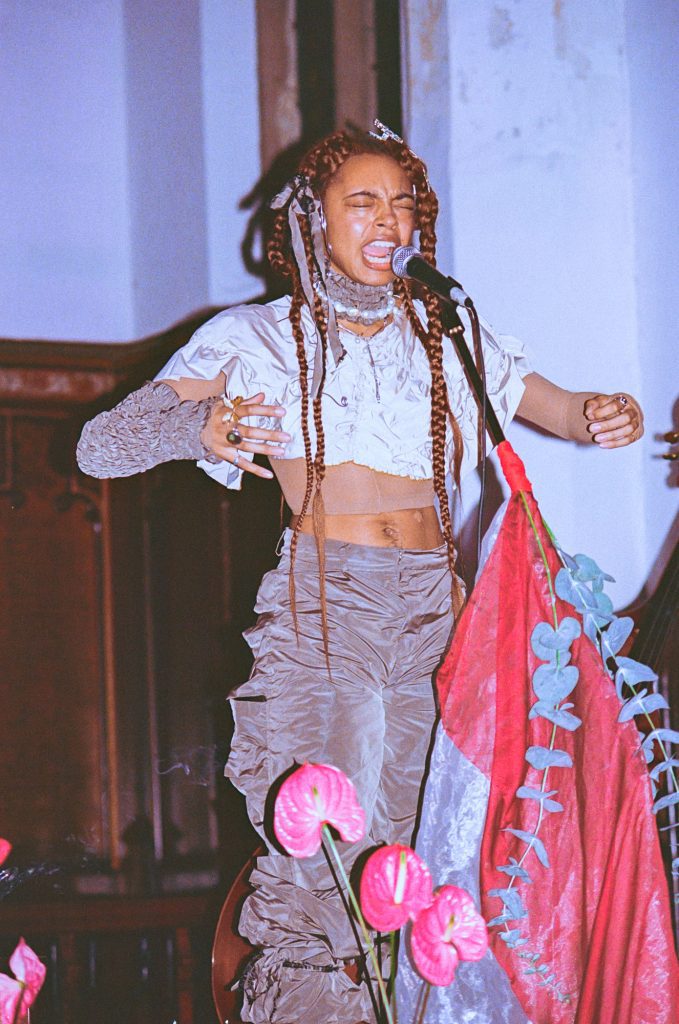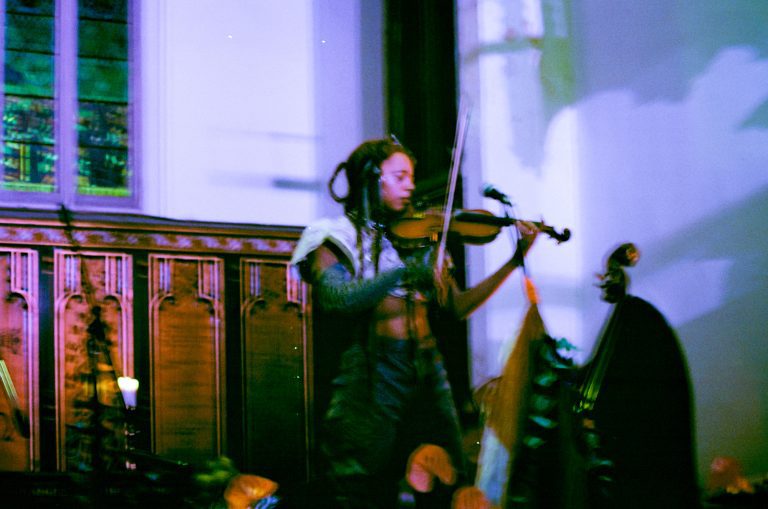
What are the intersections of artistic practices spanning composition, visual, and performance art? Damsel Elysium shares their unique perspectives on how these mediums inform one another, the profound influence of nature on their work and the importance of finding new ways to communicate. Their insights reveal a deep connection to the world around us, challenging traditional norms and embracing a holistic approach to art and sound.
hube: Your artistic practice spans composing, visual, and performance art. How do these different mediums influence and inform each other in your creative process?
Damsel Elysium: Well, that’s quite a tough question, I think. Fundamentally, I see them all as the same. The visual world and the sonic world are very much united for me. If I’m scoring something or writing music, scenes are happening in my head as colours, as pictures that I want to show. So when I am working with sound, I always want to present a visual world with it. Umm, I also studied film, so that has influenced how my music always has a narrative to it. Because I’m thinking in scenes and stories rather than just the sound itself. That being said, though, I’m very drawn to the spontaneity of it as well. And sound is also something that I find a lot of sensory joy from. For me, they can’t exist without each other. They’re kind of one organism.
h: You beautifully compare human relationships to the roots of a tree and the mycorrhiza in the ground. How do you envision these unions, and how did this perspective influence the production and lyrical elements of your work?DE: We are all natural beings and communicate in unique ways. When I learned about trees using their roots to communicate and share resources, it felt very communal and right. It made sense. You know, it was surprising and amazing but also reassuring. All of nature, including us, has a form of communication and sharing resources. I wanted to illustrate that through my imagery. Trees communicate with each other, but we humans can also communicate with nature, the trees, and the sea. Visually, I wanted to represent that by making myself appear as though I was merged with nature, whether it was becoming the tree. Like my EP cover has branch hands. And other elements where I’m merging with the sea or other elements. It was about representing myself as part of nature, not just a subject with a pretty background but as part of me, growing with it and communicating with it.

